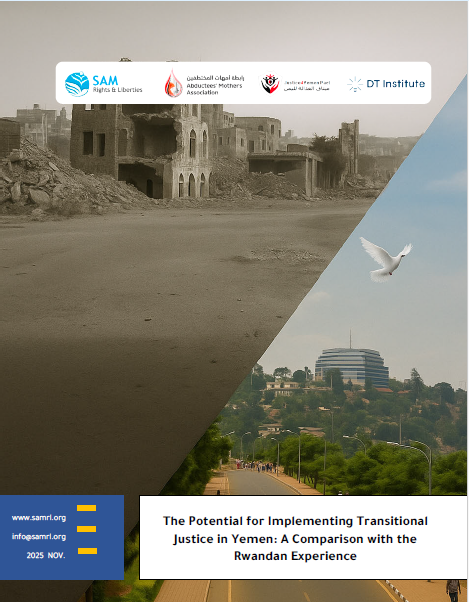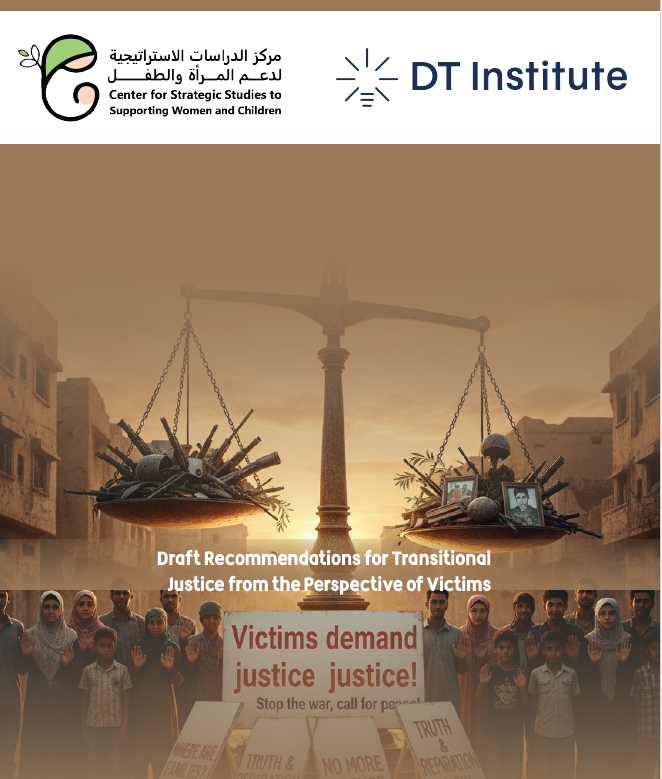4 April, Justice4Yemen Pact
Today, the Justice 4 Yemen Pact coalition marks International Mine Awareness Day — a solemn occasion to reflect on the impacts and dangers of landmines. As the world unites to raise awareness of unexploded ordinance and landmines, we highlight the criminal nature of planting or abandoning landmines and advocate for a safer global environment.
Despite Yemen’s signing of the Ottawa Convention in 1998 — a treaty banning anti- personnel landmines – Yemen is among the top 3 worst countries for ‘contamination’ by explosives All parties to the conflict, in particular the Ansar Allah movement (known as the Houthis), are responsible for widespread use and planting of landmines in both the east and west of the country and continuously disregard the provisions of the treaty.
For 27 years, the Ottawa Treaty has banned the use, stockpiling, production and transfer of anti-personnel mines. Yet there are still daily casualties — deaths, maimings and life- changing disabilities. Landmines have turned once prosperous areas into uninhabitable zones and put vast agricultural and grazing areas at risk from hidden explosive devices.
Yemen faces a dual threat from landmines and unexploded ordnance (UXO), including remnants of airstrikes, which pose a significant risk to civilians even as the 2022 ceasefire agreement continues to hold. Credible estimates from UN resources suggest millions of mines and unexploded ordnance remain scattered across the country. Unfortunately, the exact scale of contamination remains uncertain due to limited capacity, funding, equipment and access for survey teams. This situation is exacerbated by the fact that Yemen has long been contaminated with landmines from previous conflicts dating back to the 1960s.
Tragically, most of the victims are children and internally displaced persons, underscoring the urgent need for comprehensive action to address this grave humanitarian crisis. According to Save the Children, the number of children injured by explosive remnants of war (ERW) has doubled since 2018, with one in three children involved in UXO incidents dying. Furthermore, half of all unexploded ordnance victims in 2022 were children.
Despite concerted efforts by international and regional organizations to tackle the problem, the threat of explosive remnants of war persists. According to OCHA the number of people affected by landmines and ERW, which includes unexploded ordnance (UXO), has increased by 160 percent. Alarmingly, these remnants are responsible for a significant proportion. An analysis conducted by the United Nations Office for the Coordination of Humanitarian Affairs pointed to a 20% increase in civilian casualties resulting from explosive remnants of war since the commencement of the ceasefire in April 2022, compared to the preceding six-month period.
For 27 years, the Ottawa Treaty has banned the use, stockpiling, production and transfer of anti-personnel mines. Yet there are still daily casualties — deaths, maimings and life-changing disabilities. Landmines have turned once prosperous areas into uninhabitable zones and put vast agricultural and grazing areas at risk from hidden explosive devices.
Naval mines and improvised explosive devices (IEDs) pose a significant risk to fishermen in Yemeni waters and exacerbate the existing dangers posed by landmines. These potentially lethal explosive devices often become entangled in fishing nets or drift to shore, leading to numerous accidents and fatalities among fishermen. As a result, many have been forced to abandon their livelihoods or relocate to safer areas.
A recent report by the Marib Dam Foundation, a member of the Justice 4 Yemen Pact coalition, describes the catastrophic effects of landmines in Marib and paints a grim picture of the situation on the ground. Their records show 131 civilian casualties, including 28 dead and 103 injured, highlighting the scale of the crisis. Most of the victims are women and children, innocent bystanders caught up in the violence of the conflict. The Human Rights Office in Marib confirms these findings and has recorded 146 deaths and 393 injuries between August 2014 and December 2020, with children bearing the brunt, especially in agricultural and pastoral areas.
In addition, the National Committee to Investigate Allegations of Human Rights Violations in Yemen has tracked 1174 mine explosions from 2016 to March 2023. The number of victims is staggering: 1840 victims, including 747 dead (148 children) and 53 women, and 1093 injured (244 children and 96 women). We present these staggering figures to call for increased and effective pressure on the Houthi group, which most reports hold responsible for these crimes. We call on them to cease these activities and hand over the maps of laid landmines in order to respect humanity and the right to a safe life for all Yemeni citizens without exception.
The effects of landmines go beyond physical damage. They inflict severe trauma on victims and affect the well-being of families and society as a whole. They also disrupt the provision of relief supplies and vital economic services. Still, the issue of landmines is often overlooked in negotiations and peace agreements, as are reparations and justice measures. Landmines are not only a threat to human rights, but also an obstacle to sustainable peace. They are a constant reminder that prevents society from healing and moving forward.
Despite the significant problem of landmines in Yemen, global attention and assistance dedicated to addressing this issue remain insufficient relative to its magnitude. Therefore, the Justice4Yemen Pact makes the following recommendations to both Yemeni and international stakeholders:
- International cooperation and treaties: Encourage Yemeni authorities to abide by international treaties such as the Ottawa Treaty (Mine Ban Treaty) and the Convention on Certain Conventional Weapons (CCW).
- Clearance and demining: Invest in mine clearance and demining operations. Deploy trained demining teams, use specialized equipment and technology, and conduct systematic surveys to identify and clear contaminated areas.
- Risk education and awareness: Conduct comprehensive risk education programs to educate civilians about the dangers of landmines and unexploded ordnance. Educate communities on how to recognize, avoid and report potential mine hazards.
- Victim assistance and rehabilitation: Provide assistance and rehabilitation to victims of landmines. Provide medical care, psychosocial support, vocational training and socio-economic assistance to help them reintegrate into society.
- Community engagement and participation: Involve local communities and active local initiatives and civil society organizations in mine action. Community-based approaches empower stakeholders to take ownership of initiatives tailored to their specific needs.
- Research and innovation: Invest in research and innovation to develop new technologies, methods and strategies for mine detection, clearance and victim assistance.
- Accountability and justice: Address the need to provide justice for victims and take measures for reparation and accountability, including compensation measures for victims.
- Submission of landmine maps: The Houthi group should submit the locations of landmines to help clear these explosive remnants.
- Inclusion of landmines and explosive devices in peace agreements: The issue of landmines should be a central issue in the ongoing negotiations.
- Call for an independent investigative mechanism: Establish an independent investigative mechanism to investigate violations and monitor progress.
Justice4Yemen Pact
April 4, 2024
- Abductees’ Mothers Association (AMA)
- Al-Amal Women’s and Sociocultural Foundation (AWS)
- Center for Strategic Studies to Support Women and Children (CSWC)
- Free Media Center for Investigative Journalism
- Marib Dam Foundation for Social Development (MDF)
- Musaala Organization
- SAM Organization for Rights and Liberties
- Studies and Economic Media Center (SEMC)
- Watch for Human Rights
- Yemeni Coalition to Monitor Human Rights Violations (YCMHRV)
An English and Arabic PDF copies are available at:





